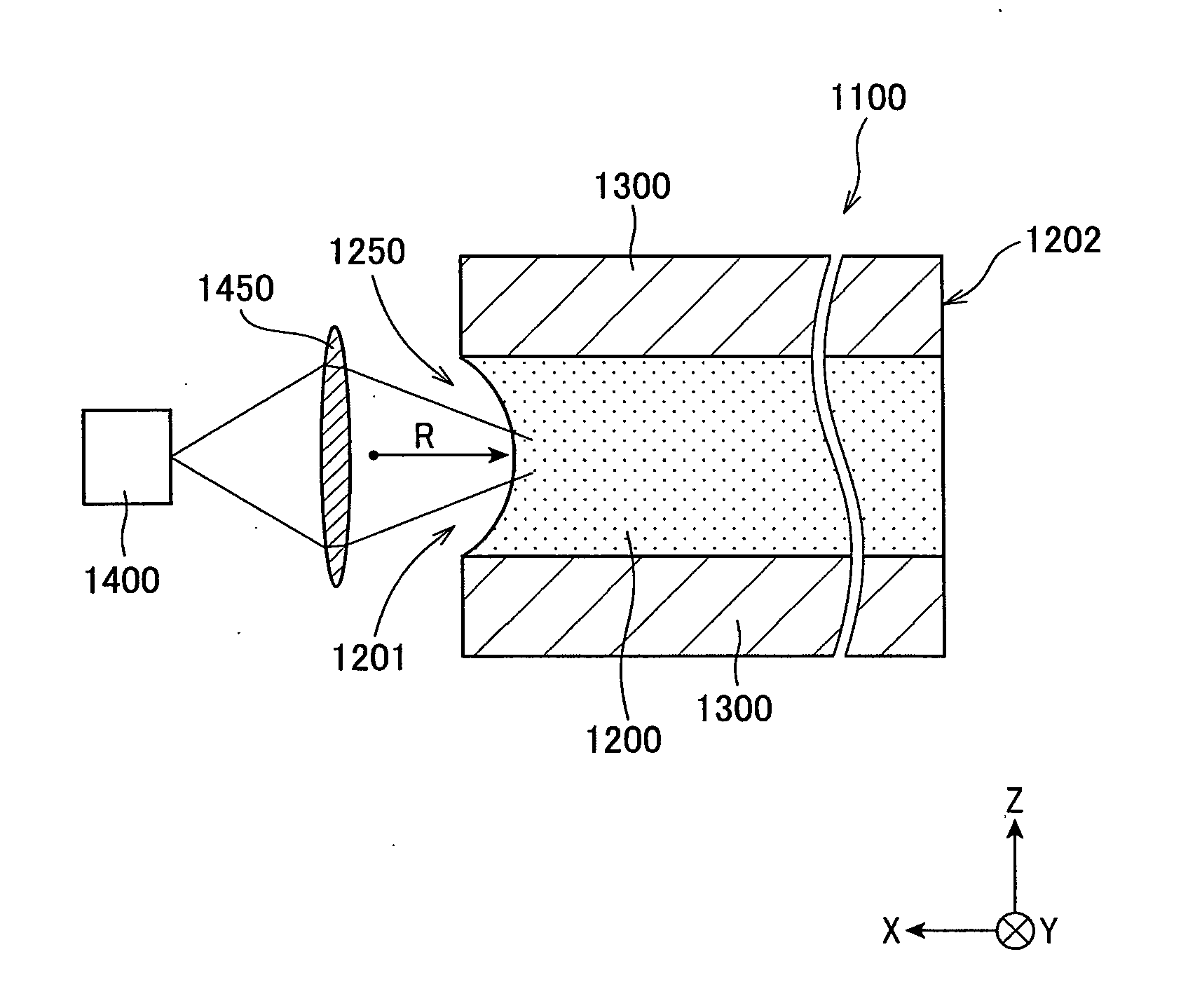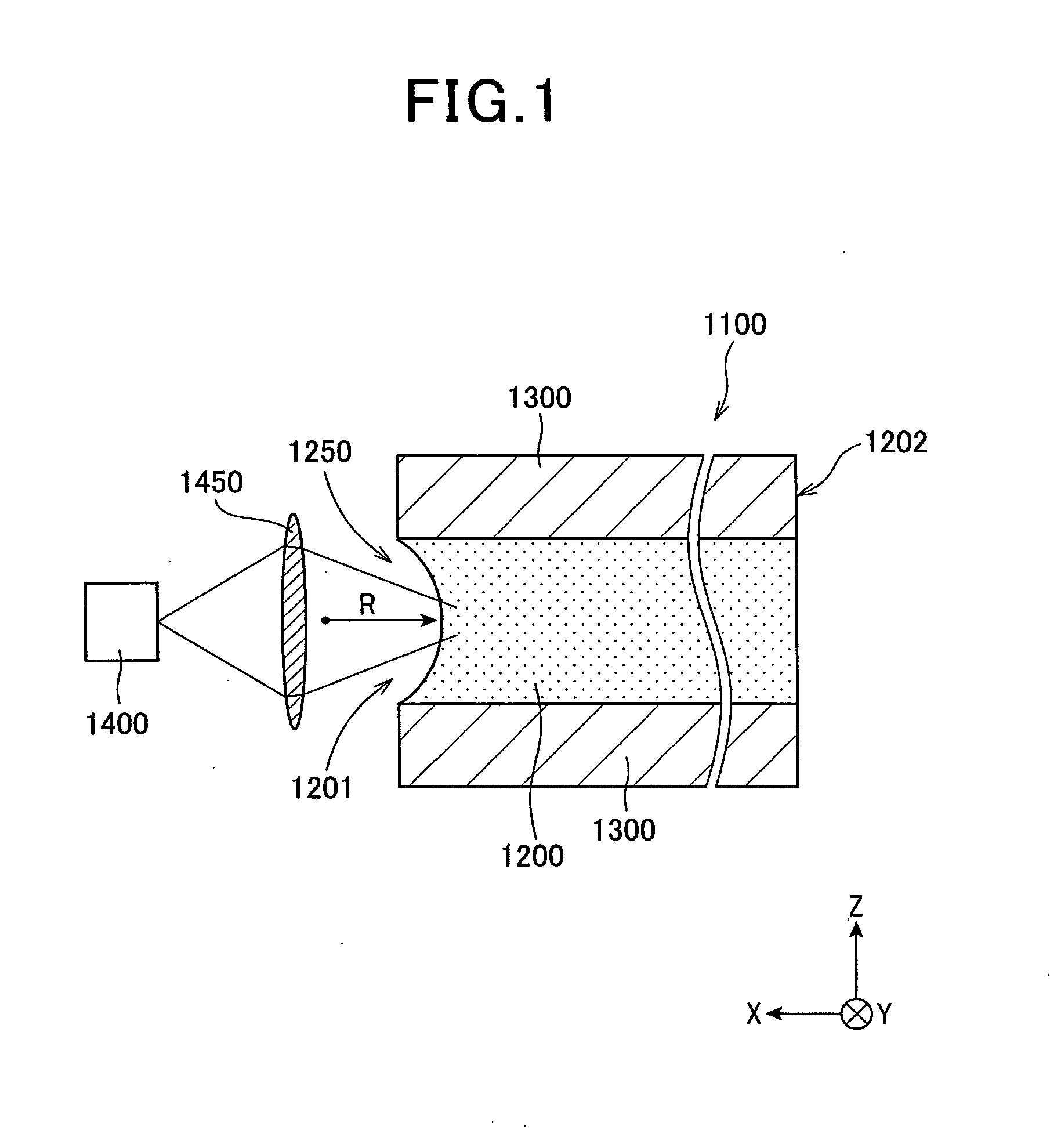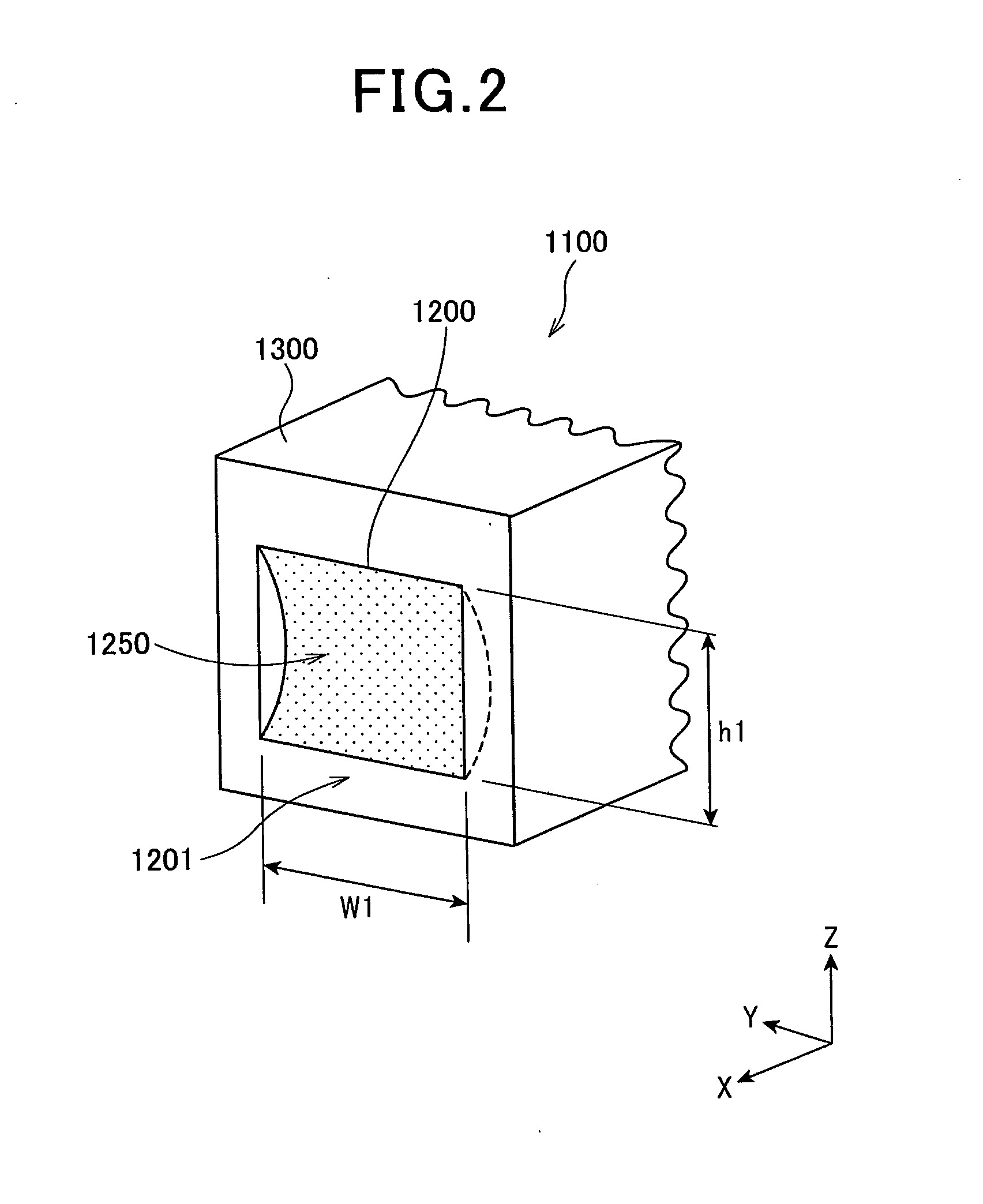Optical waveguide and thermal assist magnetic recording head therewith
a technology of optical waveguides and magnetic recording heads, which is applied in the field of optical waveguides and thermal assistance magnetic recording heads, can solve the problems of volume reduction and reduction in the thermal stability of magnetization, and achieve the effect of large optical coupling efficiency
- Summary
- Abstract
- Description
- Claims
- Application Information
AI Technical Summary
Benefits of technology
Problems solved by technology
Method used
Image
Examples
first modified example
[0051]FIG. 3 shows a first modified example of the concave part that is formed on the end surface of the light incident side of the core 1200.
[0052]The concave part 1251 in FIG. 3 is the same as the embodiment shown in FIG. 2 with respect to the structural point of providing the curved surface with radius R. However, the concave part 1251 shown in FIG. 3 differs from the concave part 1250 shown in FIG. 2 with respect to the point where the entire concave part 1251 is formed as the curved surface although this may be difficult to grasp from the drawing. In other words, the entire concave part 1251 shown in FIG. 3 is curved by suitably changing the R value according to the location. A method can be used, for instance, of initially notching the plane end surface on the curved surface with the radius R, and then the remaining four corners of the plane end surface are appropriately smoothed in succession to curve gradually with a different R′ value or the like.
[0053]The size of the outer...
second modified example
[0055]FIG. 4A shows a second modified example of the concave part that is formed on the end surface of the light incident side of the core 1200.
[0056]As shown in FIG. 4A, the cross sectional shape (Y-Z plane) that is perpendicular to the light traveling direction of the concave part 1252, is a quadrilateral shape (a rectangular shape) and is structured to be a substantially quadrangular pyramid trapezoid shape where the cross section gradually tapers toward the light traveling direction.
[0057]The concave part 1252 can be formed by etching the plane of the end part of the core 1200 by using, for instance, a reactive ion etching (RIE) method.
[0058]Herein, the phrase “substantially a quadrangular pyramid trapezoid shape” indicates that the shape is not limited geometrically to a precise quadrangular pyramid trapezoid shape. More specifically, it allows a configuration that is formed by hollowing the concave part by, for example, vacuum process etching or the like from among such types ...
third modified example
[0062]FIG. 4B shows a third modified example of the concave part that is formed on the end surface of the incident light side of the core 1200.
[0063]As shown in FIG. 4B, the shape of the concave part 1253 is similar to the shape of the concave part shown in FIG. 4A described above. The shape of the concave part 1253 shown in FIG. 4B is different from the concave part shape shown in FIG. 4A described above with respect to the point where the Y-direction surfaces 1253a facing each other are in a mutually nearly parallel relationship and do not funnel into the center of the concave part.
PUM
 Login to View More
Login to View More Abstract
Description
Claims
Application Information
 Login to View More
Login to View More - R&D
- Intellectual Property
- Life Sciences
- Materials
- Tech Scout
- Unparalleled Data Quality
- Higher Quality Content
- 60% Fewer Hallucinations
Browse by: Latest US Patents, China's latest patents, Technical Efficacy Thesaurus, Application Domain, Technology Topic, Popular Technical Reports.
© 2025 PatSnap. All rights reserved.Legal|Privacy policy|Modern Slavery Act Transparency Statement|Sitemap|About US| Contact US: help@patsnap.com



